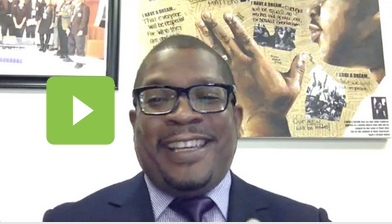Behind Agenda-Driven Results Is Need for School Choice and High Standards in Education
Phi Delta Kappa International in conjunction with Gallup released their 47th annual poll for 2015 on “The Public’s Attitudes Toward the Public Schools.”
This year’s survey, which continues to suffer from biased and misleading questions as it has in years past, focuses heavily on testing, with the takeaway being “testing doesn’t measure up for Americans.”
However, a closer look at the data reveals populations typically underserved by the traditional school system favor high standards and choices when it comes to their child’s education.
TESTING: Blacks and Hispanics are more likely than whites to say that standardized testing is an important factor in improving schools and determining school quality. Fifty-seven percent of blacks say parents should not opt-out from having their children take standardized tests, and 75 percent of black respondents and 65 percent of Hispanic respondents would not excuse their child from testing, compared to 44 percent of whites.
CHOICE: Nearly two thirds of Americans support parents selecting any public school within their district, and 64 percent of Americans support charter schools. However, CER’s Survey of America’s Attitudes Towards Education Reform reveals support for charter schools increases to 73 percent when survey respondents are provided the definition of charter schools.
The PDK/Gallup poll reveals just 31 percent of Americans support “allowing students and parents to choose a private school to attend at public expense,” more commonly known as vouchers.
However, using the phrase “at public expense” creates the illusion that parents who are seeking choices outside of the traditional public education system are not part of the “public,” and incorrectly implies that choice programs are a financial strain when the reality is they typically do more to educate students with less money.
BOTTOM LINE: Poll results from an organization that represents status quo interests should not overpower voices of parents on the ground in communities that simply want more and better education options for their children.
“Since I live in South Central, I don’t have a choice between a good school and the best school. I had a choice between the worst schools and a good education all around,” said Jesus Andrade of Los Angeles, California, who has two sons attending public charter schools, in the 2015 PDK/ Gallup poll results report.
Jesus’ sentiment is one echoed by many parents across the nation, and is why CER continues to advocate for more Parent Power in education, and created its new and improved Parent Power Index, so parents and community leaders can have more control in and among schools, creating laws that truly provide increased power, particularly to those who have none.














The Summer I Became An Education Reformer
It’s hard to believe that it’s been nine weeks since I first walked into the CER office. As I sat in on my first staff meeting that Monday morning, I had a million thoughts swirling in my head about what my time here would be like. Never would I have believed I would have the chance to go to several talks at Capitol Hill, be invited to a multitude of education reform events, have the experience of planning an intern only event or even be a part of an education reform rally. Nor could I have imagined the amount of knowledge I have had the privilege of learning. All these things and more are what encompassed my time here at The Center for Education Reform.
One of my favorite experiences would have to be a discussion we went to at American Enterprise Institute about Robert Putnam’s book, “Our Kids: The American Dream in Crisis.” This event combined my two favorite subjects: education and economics. It was reasonable, logical and laid everything out on the table. I enjoyed hearing the explanation of the book from the author himself, Robert Putnam, but I also enjoyed the critiques different members of the panel gave as well.
Having the opportunity to be in this world and become an education reformer has only reaffirmed my passion in life. Making a difference and doing everything I can to ensure every child is given a proper education is my lifelong dream and being here this summer at CER has given me a chance to start the path to accomplishing this dream.
My experience this summer would not be what it was if it weren’t for the amazing staff here at CER. Without their wisdom, guidance, or knowledge my summer would have not been the enriching experience for which I am so grateful. Thank you for an unforgettable summer and the amazing chance to become an education reformer.
Emily Kelleher, CER Intern